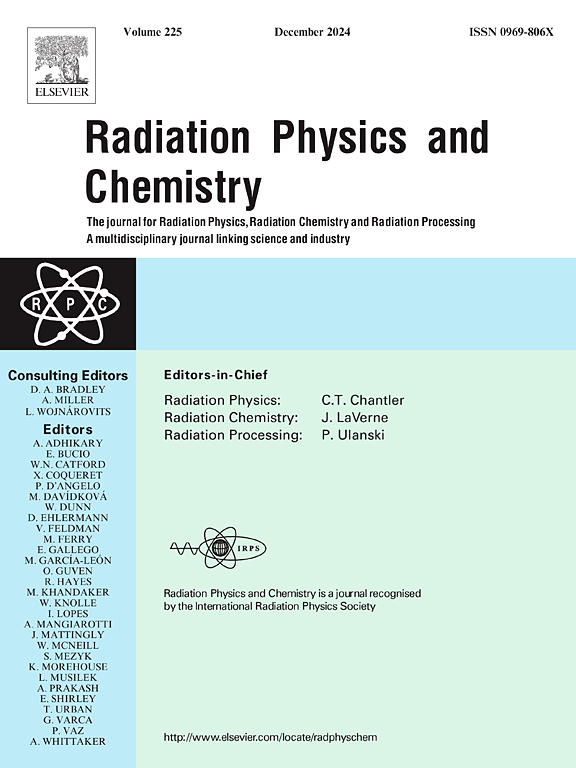注塑交联全聚乙烯复合材料的形状记忆特性
IF 2.8
3区 物理与天体物理
Q3 CHEMISTRY, PHYSICAL
引用次数: 0
摘要
在这项研究中,我们研究了一种新型自增强聚合物复合材料(SRPC)的形状记忆特性。将切碎的 Dyneema® SK76 纤维与高密度聚乙烯(HDPE)树脂混合,通过注塑成型制作样品。为了使纤维保持形状并有效加固,我们用伽马辐照(吸收剂量分别为 100、200 和 300 kGy)使其交联。在第二步辐照中,我们用 50、100、150 和 200 kGy 的剂量辐照复合材料,使其具有形状记忆特性。索氏提取法、差示扫描量热法和扫描电子显微镜显示,纤维在加工过程中发生了交联并保持了结构的完整性。我们通过弯曲试验和动态机械分析证实了纤维的增强效果。在自由回收实验中,样品的回收率和固定率均超过 79%。使用最高剂量时,恢复应力增加了 26%。我们证明了这种新型自增强方法在生产具有更好特性的形状记忆聚合物(SMP)中的可行性。本文章由计算机程序翻译,如有差异,请以英文原文为准。
Shape memory characteristics of injection molded, cross-linked all-polyethylene composites
In this study, we investigated the shape memory properties of a novel self-reinforced polymer composite (SRPC). Chopped Dyneema® SK76 fibers were mixed with high-density polyethylene (HDPE) resin, and samples were produced by injection molding. To allow the fibers to keep their shape and reinforce effectively, we cross-linked them with gamma irradiation (100, 200, and 300 kGy absorbed doses). In the second step of irradiation, we irradiated the composites with doses of 50, 100, 150, and 200 kGy to give them shape memory properties. Soxhlet extractions, differential scanning calorimetry, and scanning electron microscopy revealed that the fibers cross-linked and kept their structural integrity through processing. We confirmed the reinforcing effect of the fibers with flexural tests and by dynamic mechanical analysis. In free recovery experiments, samples had recovery and fixity ratios above 79%. With the highest dose, recovery stress increased by 26%. We showed the viability of this novel method of self-reinforcement in the production of shape memory polymers (SMPs) with improved characteristics.
求助全文
通过发布文献求助,成功后即可免费获取论文全文。
去求助
来源期刊

Radiation Physics and Chemistry
化学-核科学技术
CiteScore
5.60
自引率
17.20%
发文量
574
审稿时长
12 weeks
期刊介绍:
Radiation Physics and Chemistry is a multidisciplinary journal that provides a medium for publication of substantial and original papers, reviews, and short communications which focus on research and developments involving ionizing radiation in radiation physics, radiation chemistry and radiation processing.
The journal aims to publish papers with significance to an international audience, containing substantial novelty and scientific impact. The Editors reserve the rights to reject, with or without external review, papers that do not meet these criteria. This could include papers that are very similar to previous publications, only with changed target substrates, employed materials, analyzed sites and experimental methods, report results without presenting new insights and/or hypothesis testing, or do not focus on the radiation effects.
 求助内容:
求助内容: 应助结果提醒方式:
应助结果提醒方式:


